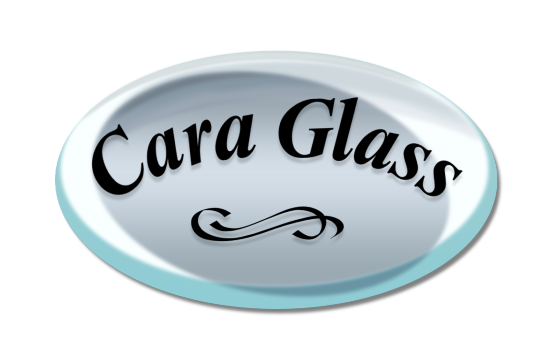Terminology
At Cara Glass, we provide a wide range of home improvement solutions. Whilst many homeowners have a firm grasp on what to expect with our products, a common issue for many of our valued customers is understanding some of the advanced terminology that inevitably comes along with it. As such, we have decided to help homeowners by explaining some of these trickier terms. Read below to find out more.
Architrave: Refers to the moulded frame that surrounds a window or door.
BFRC: British Fenestration Rating Council – an independent organisation that tests windows and doors, subsequently issuing their energy rating standards.
Bottom Rail: The bottom horizontal part of the profile of a window frame.
Building Regulation: The Government codes that dictate the criteria that a new building project and refurbishment work must adhere to.
Casement: A term often used to describe a conventional window that usually sports a sash that is either side or top hinged.
Caulking: A mastic compound that is used to fill joints and sealing cracks. This is to prevent leakage of water and air.
CERTASS: CERTification and ASSessment. An alternate organisation that certifies and assesses the glazing industry.
Cill: Also known as sill – refers to the protruding lip that directs water away from the brickwork at the bottom of a window opening.
Coated Glass: Glass with an outside surface provided with a mirror reflective surface.
Condensation: The deposit of water vapour from the air on any cold surface where the temperature is below the dew point (such as window glass).
Deadbolt: A secure locking system that is often found in modern doors.
Dummy sash: A part of the window made to look like it opens but is fixed and won’t open.
Easy clean hinge: A hinge that can be fitted to a side hinged casement window, allowing the window to open for an easy external clean.
Egress hinge: A hinge fitted to ensure a side opening casement window will open as wide as possible. (Often in need of a fire escape).
Energy rating: A government backed scheme to measure the total energy efficiency of a window or door.
Extrusion: The process of pushing PVCu pellets through a die to form a solid shape.
Fasteners: Devices that join two parts together, such as nails, screws or bolts.
Fenestration: The placement of a window opening within the wall of a building.
FENSA: Fenestration Self-Assessment Scheme. Ensures that window and door installers achieve the correct building regulations.
Finish Trim: The interior or exterior trim around a window unit.
Fixed Light: A window that does not open.
Foil: A plastic laminate that is UV bonded to the PVCu, granting a wood effect and colour finishes.
Flashing: Lead or a similar material. Often used to prevent water penetration into a building.
Flag hinge: A hinge that is partly fixed onto the opening sash and the outer frame.
Flying mullion: A vertical division between 2 opening windows, offering 2 openings that are both unobstructed.
Friction stays: Refers to hinges holding an open window in place through friction.
GGF: Refers to the Glass & Glazing Federation. An independent organisation that acts as an ombudsman for the glass and fenestration industry.
Glazing: The installation of glass inside a window opening.
Glazing bead: A removable bead that holds the glass in place.
Glazing channel: A groove cut on the sash for the mounting of the glass.
Head: The top part of the window frame.
Head Vent: Ventilation provided through the head of a window frame.
Interior trim: The inside moulding within a window frame.
Jamb: The vertical member at the side of the window frame.
Lintel: The horizontal member over a window or door opening, supporting the weight of the wall above.
Locking system: A fastening device where the bolt is secured and can be operated with a key.
Low-emissivity: A coating for glass that reflects heat energy.
Obscure glass: Textured glass that is not clear.
Oriel window: A window that projects from the wall and is carried on brackets, corbels or a cantilever.
Outer frame: The portion of the window frame that is exposed to the outdoors.
Pane: A sheet of glass.
Patterned glass: Glass surfaces with decorative or privacy design.
Pencil hinge: A hinge that is partly fixed onto the opening sash and outer frame.
PVC: Refers to Polyvinylchloride Un-plasticised. A plastic material used for window framing.
Rail: A horizontal part of a window sash.
Restrictors: A mechanism of doors and windows that restricts the opening width of a sash.
Sash: The framework of rails and stiles where the lights of a window are set.
Sealant: A compressible plastic material that is used to seal any opening.
Side light: A fixed and narrow window next to a door opening.
Silicone: A sealing agent that resists water.
Single hung sash: A window where the sash is fixed.
Sliding sash: A window that can move horizontally through grooves or tracks.
Spacer: The linear object that separates and maintains the space between the glass surfaces of insulating glass.
Thermal conduction: Refers to the heat transfer through a material.
Thermal insulation: Refers to materials that can resist heat flow.
Transom: A horizontal piece that separates a door from a window.
Transom light: A window located above a door.
Trim: Moulding that surrounds a window opening.
Triple Glazing: 3 panes of glass.
U-value: The rate of heat flow through a building construction.
Vertical slider: A window that moves horizontally in grooves or tracks.
Weather-strip: A resilient strip covering the joint between the window sash and frame, reducing air leaks and water seepage.
Weather tight: Sealed to prevent the entry of air and precipitation.
Window unit: A complete window with a frame and sash.
To find out more about the extensive terminology of our home improvement solutions, why not contact us on 01722 744424 or use our online contact form. Alternatively, you can try our free online quoting engine.




